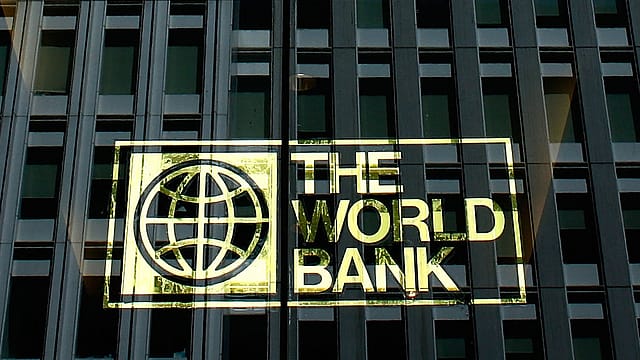World Bank warns of slowest global growth in decades amid trade tensions
ADVERTISEMENT

Heightened trade tensions and policy uncertainty are expected to drive global growth down this year to its slowest pace since 2008, outside of outright global recessions, according to the World Bank’s latest Global Economic Prospects report.
The report projects India’s GDP growth at 6.3% in FY2025/26, 0.4 percentage points lower than its January estimates. Rising global trade barriers and weak export growth in key markets are cited as the reasons for India’s slower growth. The Bank’s growth forecasts for nearly 70% of all economies—across all regions and income groups—have been downgraded in the report.
However, the report states that in the next two fiscal years, starting in FY2026/27, India’s growth is expected to recover to an average of 6.6% annually, partly supported by robust services activity contributing to a pickup in exports.
Overall, global growth is projected to slow to 2.3% in 2025, nearly half a percentage point lower than the rate expected at the start of the year. While it does not warn of a global recession, the report notes that if current forecasts for the next two years materialise, average global growth in the first seven years of the 2020s will be the slowest of any decade since the 1960s.
“Outside of Asia, the developing world is becoming a development-free zone,” said Indermit Gill, the World Bank Group’s Chief Economist and Senior Vice President for Development Economics. “It has been advertising itself for more than a decade. Growth in developing economies has ratcheted down for three decades—from 6% annually in the 2000s, to 5% in the 2010s, to less than 4% in the 2020s. That tracks the trajectory of growth in global trade, which has fallen from an average of 5% in the 2000s, to about 4.5% in the 2010s, to less than 3% in the 2020s. Investment growth has also slowed, but debt has climbed to record levels.”
January 2026
Netflix, which has been in India for a decade, has successfully struck a balance between high-class premium content and pricing that attracts a range of customers. Find out how the U.S. streaming giant evolved in India, plus an exclusive interview with CEO Ted Sarandos. Also read about the Best Investments for 2026, and how rising growth and easing inflation will come in handy for finance minister Nirmala Sitharaman as she prepares Budget 2026.
According to the report, global growth could rebound faster than expected if major economies are able to mitigate trade tensions—thereby reducing overall policy uncertainty and financial volatility. The analysis finds that if today’s trade disputes were resolved through agreements that halve tariffs relative to their levels in late May, global growth would be 0.2 percentage point stronger on average over the course of 2025 and 2026.
“Emerging-market and developing economies reaped the rewards of trade integration but now find themselves on the front lines of a global trade conflict,” said M. Ayhan Kose, the World Bank’s Deputy Chief Economist and Director of the Prospects Group. “The smartest way to respond is to redouble efforts on integration with new partners, advance pro-growth reforms, and shore up fiscal resilience to weather the storm. With trade barriers rising and uncertainty mounting, renewed global dialogue and cooperation can chart a more stable and prosperous path forward.”
